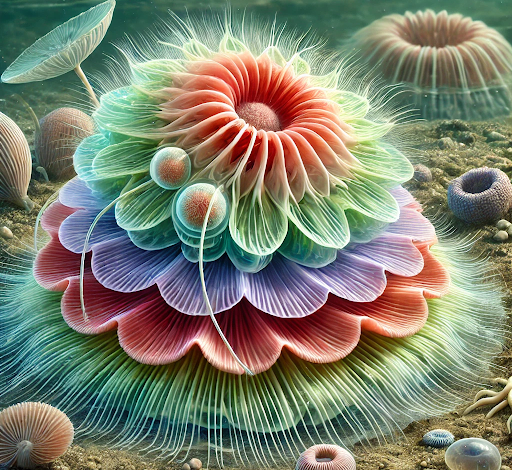The Fascinating World of Mollflwers: A Deep Dive into Their Biology

In the vast and diverse tapestry of life on Earth, certain organisms capture the imagination with their uniqueness and complexity. Among these are the mollflwers, a little-known but intriguing group of organisms that thrive in some of the most unexpected places. This article aims to shed light on these fascinating creatures, exploring their biology, ecology, and the roles they play in their ecosystems.
What Are Mollflwers?
Mollflwers, a term coined from the Latin words “mollis” (meaning soft) and “floris” (meaning flower), are a group of soft-bodied organisms that resemble flowering plants. Despite their plant-like appearance, they are not plants at all. Instead, they belong to a unique phylum within the animal kingdom, sharing certain characteristics with mollusks and marine invertebrates. Their soft, petal-like structures are not true petals but specialized organs adapted for various functions, including feeding, respiration, and reproduction.
Anatomy and Physiology of Mollflwers:
The body structure of mollflwers is both simple and complex. Their most striking feature is the flower-like structure that serves as their primary interface with the environment. This structure, often brightly colored and delicate, consists of multiple layers of tissue that perform a variety of functions:
1. Outer Layer (Exosperis): The outermost layer, called the exosperis, is similar to the exoskeleton of certain marine invertebrates. It provides protection from predators and environmental factors such as UV radiation.
2. Middle Layer (Mesopetis): The middle layer, known as the mesopetis, contains specialized cells that are involved in photosynthesis, despite mollflwers not being true plants. These cells capture light and convert it into energy, aiding in their survival in nutrient-poor environments.
3. Inner Layer (Endosperis): The innermost layer, or endosperis, houses the mollflwer’s vital organs. This includes a rudimentary digestive system, reproductive organs, and a network of nerves that allow the mollflwer to respond to environmental stimuli.
Reproduction and Life Cycle:
Mollflwers exhibit a unique form of reproduction that combines aspects of both sexual and asexual methods. During the mating season, which occurs in specific environmental conditions, mollflwers release spores into the water. These spores, once fertilized, develop into larvae that eventually settle and grow into new mollflwers.
Interestingly, mollflwers can also reproduce asexually through a process known as budding. In this process, a small portion of the mollflwer’s body detaches and grows independently, eventually developing into a new organism. This ability allows mollflwers to rapidly colonize new environments, contributing to their success as a species.
Ecological Role and Importance:
Mollflwers play a crucial role in the ecosystems they inhabit. Often found in shallow marine environments, they contribute to the biodiversity of these areas by providing habitat and food for various marine species. Their presence helps maintain the balance of the ecosystem, supporting the survival of other organisms such as small fish, crustaceans, and even certain types of algae.
In addition to their ecological importance, mollflwers have garnered interest for their potential applications in biotechnology. Researchers are studying their unique photosynthetic cells and regenerative abilities, which could have implications for fields such as renewable energy and medicine.
Conclusion:
The world of mollflwers is a testament to the incredible diversity of life on Earth. These organisms, with their unique blend of animal and plant-like characteristics, offer a fascinating glimpse into the adaptability and complexity of life. As research continues, we are likely to uncover even more about these enigmatic creatures, deepening our understanding of the natural world and the interconnectedness of its many inhabitants.




